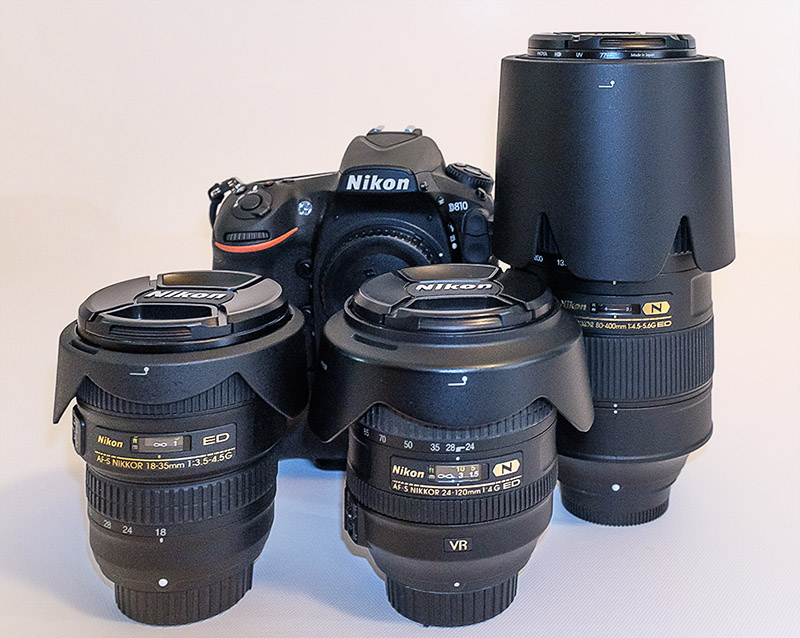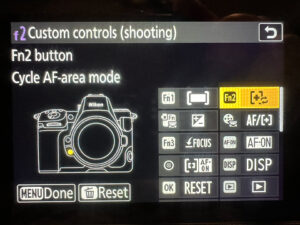As a nature and wildlife photographer with a passion for birds it is often a challenge to decide on what gear to take when traveling. If we are flying as a family we have enough hand luggage allowance to fit in the big lenses without too much bother but if a trip is not specifically photography related or if only one or two of us are traveling a single hand luggage allowance doesn’t accommodate much in the way of gear. A photo vest which can accommodate a couple of bodies and lenses is useful to get bag weight down if it is being weighed but I have put together a kit that is relatively light and compact and covers the range needed for most landscape, wildlife and even some bird photography.
My primary camera body is the Nikon D810 which I use with the MB-D12 battery grip which accommodates rechargeable AA batteries or the Nikon D4 (EN-EL18) battery which gives huge battery life and increased frame rate (6 fps in 1.2x crop mode or 7 fps in 1.5x DX crop as opposed to 5 fps in full frame mode). For maximum weight saving the grip can be removed saving 455g.
The lens combination in this kit starts with the Nikon AFS 18-35mm f3.5-4.5 to cover the wide end, the Nikon AFS 24-120mm f4 as the mid range zoom and then the Nikon AFS 80-400 f4.5-5.6 at the long end. The 36 megapixels of the D810 allows significant cropping while keeping a good number of pixels on the subject so using it in DX crop mode gives the equivalent angle of view of a 600mm lens and still a 15 megapixel file.
Weights;
D810 with EN-EL15 battery – 980g
Nikon 18-35 lens – 385g
Nikon 24-120 lens – 670g
Nikon 80-400 lens – 1570g
MB-D12 grip with EN-EL18 battery – 455g
This all fits with plenty of space to spare in a Gura Gear Bataflae 26l

The following galleries show the field of view available with each of the three lenses.
First is the 18-35mm shown at 18,24,28 and 35mm.

This gallery shows the 24-120mm at 24,35,50,70,85 and 120mm

This gallery shows the 80-400 at 80,105,135,200,300 and 400mm. The last 2 images were shot in 1.2x and 1.5x crop mode giving angles of view equivalent to 480mm and 600mm. This could be achieved equally by cropping the image in post but at the sacrifice of maximum frame rate.

A similar setup could include a DX format (APS-C, crop sensor) DSLR but would need the 12-24mm lens to keep the wide end covered equivalently. Nikon is unfortunately lagging behind in this department with the D300s still being the last DX format body to offer a reasonable buffer size and frame rate. The newer D7100 body has a lovely higher resolution sensor but is crippled by a small buffer that limits the sequence of shots you can take at high frame rates. The full frame D750 would be a great body for this kit but is also hampered a little by a small buffer and the lack of a control layout the matches the higher end bodies ( the lack of a dedicated AF-on button and a different button layout for ISO control being a real frustration). In time, I’m sure a more compact mirrorless kit will become available to do a similar job but currently the AF tracking and lens range are not adequate for serious bird work. I am especially fond of the Fuji range of cameras but even with the ground breaking electronic viewfinder on the X-T1 I am not sure that it is up to easily monitoring a bird’s eye for a highlight before pressing the shutter release.


Pingback: New Zealand Geographic Photographer of the Year finalist again